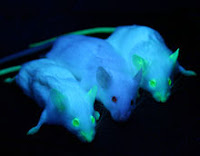Unit 9: Space + Art
Space + Art
Space is beautiful, the concept of space automatically brings on a mindset of wondering. Yes, space is mesmerizing, but it is still somewhat of an unknown to us on earth. There are thousands of planets outside of our solar system, nearly 1800 new worlds, 3,000 that are still waiting for confirmation. Although we are beginning to learn more and more through technological development, do we truly know what is out there? Are we the only living beings in this galaxy? Are there other habitable planets? How big is the actual galaxy? These are questions that we haven't yet figured out answers to. We might not know everything about space, but thanks to many scientists before us we have gotten to the point we are at now.
As far as our foundation of the knowledge of space it initially began with the introduction of their names. Ancient astronomers based the planets names on the Greek Gods. Our ideas of space grew in 1512 when Nicolaus Copernicus published a heliocentric model of our solar system with the sun placed in the middle. Then with the advancement of technology our reach to new views and news opportunities. We could see much farther through advancements of the telescope. Then the idea of contemporary space development was born after world two, only opening up more opportunities for even more developments. The Space Race between the United States and Russia increased more developments; the first satellite being launched into space as well as the creations of National Aeronautics and Space Administration (NASA). Also with space travel we were able to figure out much much more.
Space travel is my most interesting concept discussed in this weeks material. The idea of a person being sent off, and living in space is something nearly unimaginable to me. Complete silence, zero gravity, must be surreal. Space travel did not always come out smoothly, sadly disasters struck and lives were lost. But their lives would not die in vain. Space travel began with the departure of animals like Laika the dog, as well as Albert the chimpanzee. But what interests me most is the possibilities of space. Larry Paige & Eric Schmidt both brought fourth the idea of a fuel depot on space. Millions of tons of raw materials are simply floating in space, materials that we can utilize on earth such as nickel, metal cobalt, and platinum. New habitable earth's. Space is something scary, but beautiful. The possibilities opportunities of our galaxy are endless. With more knowledge of space, more growth of our human race will follow.
Work Cited
Artist, Karl Tate SPACE.com Infographics. "Mice, Flies, Cats, Dogs and Monkeys: The History of Animals in Space (Infographic)." Space.com. N.p., 12 Apr. 2013. Web. 05 June 2017.
"Dancing on the Ceiling: Art & Zero Gravity curated by Kathleen Forde : EMPAC Curtis R. Priem Experimental Media and Performing Arts Center : Troy, NY USA." Dancing on the Ceiling: Art & Zero Gravity curated by Kathleen Forde : EMPAC Curtis R. Priem Experimental Media and Performing Arts Center : Troy, NY USA. N.p., n.d. Web. 05 June 2017.
Freeman, Owen. "Future of Spaceflight and Upcoming NASA Missions." And NASA Missions Information, Facts and Photos | National Geographic. N.p., 25 May 2017. Web. 05 June 2017.
"The Copernican Model: A Sun-Centered Solar System." The Copernican Model: A Sun-Centered Solar System. N.p., n.d. Web. 05 June 2017.
"Top 20 Awesome Facts About Space." Image of armagh planetarium. N.p., 19 Dec. 2014. Web. 05 June 2017.






Interesting blog! I love the questions you posed!
ReplyDelete